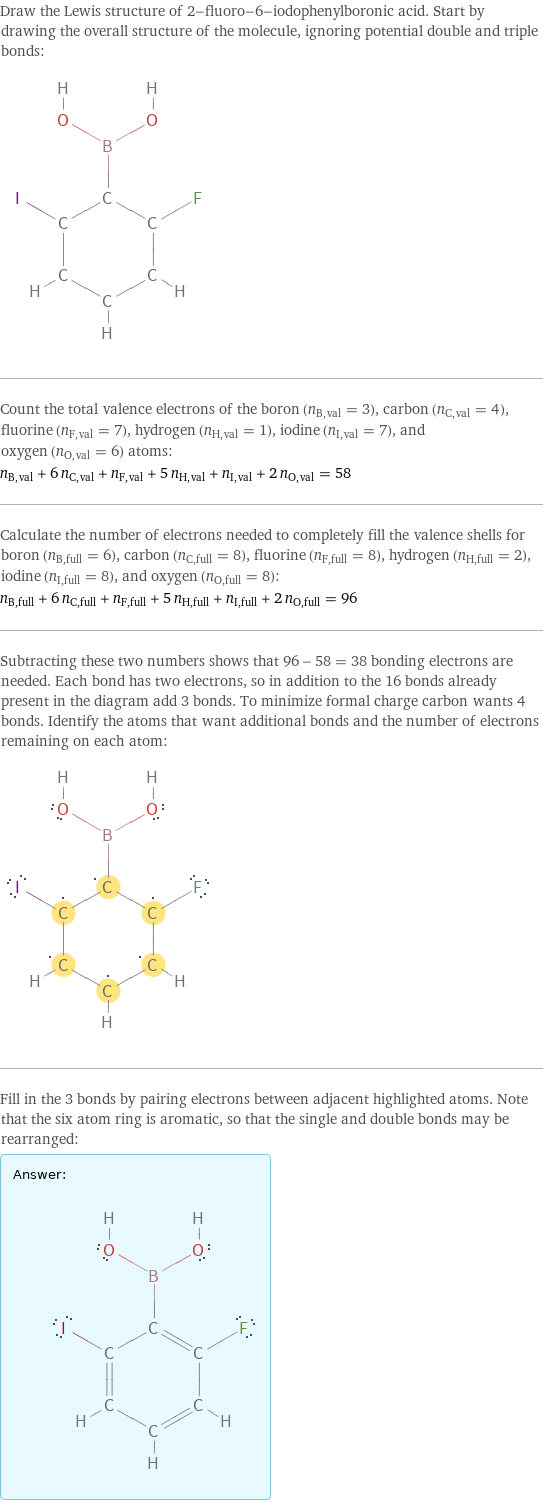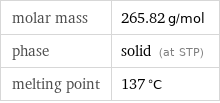Input interpretation

2-fluoro-6-iodophenylboronic acid
Chemical names and formulas

formula | C_6H_5BFIO_2 name | 2-fluoro-6-iodophenylboronic acid IUPAC name | (2-fluoro-6-iodophenyl)boronic acid alternate names | (2-fluoro-6-iodo-phenyl)boronic acid | (2-fluoro-6-iodophenyl)boronic acid mass fractions | B (boron) 4.07% | C (carbon) 27.1% | F (fluorine) 7.15% | H (hydrogen) 1.9% | I (iodine) 47.7% | O (oxygen) 12%
Lewis structure

Draw the Lewis structure of 2-fluoro-6-iodophenylboronic acid. Start by drawing the overall structure of the molecule, ignoring potential double and triple bonds: Count the total valence electrons of the boron (n_B, val = 3), carbon (n_C, val = 4), fluorine (n_F, val = 7), hydrogen (n_H, val = 1), iodine (n_I, val = 7), and oxygen (n_O, val = 6) atoms: n_B, val + 6 n_C, val + n_F, val + 5 n_H, val + n_I, val + 2 n_O, val = 58 Calculate the number of electrons needed to completely fill the valence shells for boron (n_B, full = 6), carbon (n_C, full = 8), fluorine (n_F, full = 8), hydrogen (n_H, full = 2), iodine (n_I, full = 8), and oxygen (n_O, full = 8): n_B, full + 6 n_C, full + n_F, full + 5 n_H, full + n_I, full + 2 n_O, full = 96 Subtracting these two numbers shows that 96 - 58 = 38 bonding electrons are needed. Each bond has two electrons, so in addition to the 16 bonds already present in the diagram add 3 bonds. To minimize formal charge carbon wants 4 bonds. Identify the atoms that want additional bonds and the number of electrons remaining on each atom: Fill in the 3 bonds by pairing electrons between adjacent highlighted atoms. Note that the six atom ring is aromatic, so that the single and double bonds may be rearranged: Answer: | |
Basic properties

molar mass | 265.82 g/mol phase | solid (at STP) melting point | 137 °C
Units

Chemical identifiers

CAS number | 870777-22-3 PubChem CID number | 16217765 PubChem SID number | 24883030 SMILES identifier | B(C1=C(C=CC=C1I)F)(O)O InChI identifier | InChI=1/C6H5BFIO2/c8-4-2-1-3-5(9)6(4)7(10)11/h1-3, 10-11H MDL number | MFCD06798080